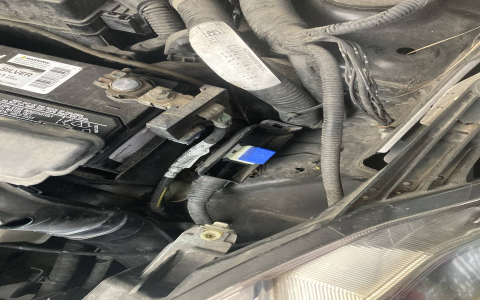A 40 amp ignition fuse blowing repeatedly indicates a significant overload or short circuit within the circuit it protects, typically supplying power to critical components like the ignition switch, starter solenoid, fuel pump (in some designs), and related modules. Identifying and fixing the root cause is crucial to prevent potential damage or fire.
Common Causes of a Repeatedly Blowing Ignition Fuse
- Short to Ground: Damaged or pinched wiring harnesses (power feed wires) creating a direct path to ground, drawing excessive current.
- Faulty Ignition Switch: An internal short circuit within the ignition switch itself, causing excessive current draw when in the "Run" or "Start" position.
- Starter Motor/Solenoid Problems: A seized starter motor drawing locked-rotor amperage, or a shorted starter solenoid coil, causing massive current surge.
- Damaged Wiring: Insulation rubbed through near sharp metal edges (firewall, fender), abrasion in harnesses, or corrosion bridging power to ground.
- Faulty Ignition Control Module/Primary Circuit Short: A dead short internally within the ignition module or coil primary wiring.
- High-Resistance Connections: Severely corroded or loose terminals creating excessive heat near the fuse block, potentially melting components and causing downstream shorts.
6 Easy Solutions to Diagnose and Fix the Problem
- Visual Wiring Inspection: Carefully trace the main power wire (often red, heavy gauge) from the battery to the ignition switch/fuse box and from the fuse/switch to the starter solenoid. Look for crushed sections, frayed insulation near sharp points (firewall pass-throughs), signs of melting, or exposed copper.
- Disconnect Suspicious Components: With the fuse out, disconnect major loads powered by the ignition circuit (if safe and known). Often the starter solenoid wire (small wire on solenoid) is a prime suspect. Disconnect it. Also disconnect any easily accessible ignition module connectors. Reinstall the fuse and turn the key. If it doesn't blow, the problem is downstream. Reconnect components one by one until the fuse blows to isolate the faulty part.
- Test Ignition Switch Resistance: Remove the ignition switch connector (ensure battery negative is disconnected first). Using a multimeter, test resistance between the main power input terminal and the ignition output terminal(s) in different key positions. Significant resistance decrease when "off" indicates an internal short. Replace the switch if faulty.
- Check Starter Circuit: Inspect the starter solenoid connections for corrosion or looseness causing arcing/heat. Listen for a strong, single "click" when trying to start - multiple clicks or grinding suggest starter issues. A bench test of the starter motor can confirm excessive draw.
- Inspect Fuse Block/Connectors: Examine the fuse holder terminals closely for signs of overheating (melting, discoloration, burnt smell) and the fuse itself for discoloration. Check tightness and corrosion on connectors plugged into the fuse box for the ignition circuit. Clean terminals.
- Check for Parasitic Draw (Carefully): While less common for blowing a large fuse instantly, a large constant parasitic drain could combine with ignition load during start to blow it. Use multimeter fused for high amps to measure key-off drain; any draw over 50-75mA warrants investigation into the source.
Important: If the fuse blows immediately upon insertion with nothing turned on, a severe short exists in the main feed wiring or a constantly powered component is shorted. Follow the wiring path meticulously. Avoid repeatedly installing the fuse without addressing the short, as it presents a fire hazard.

